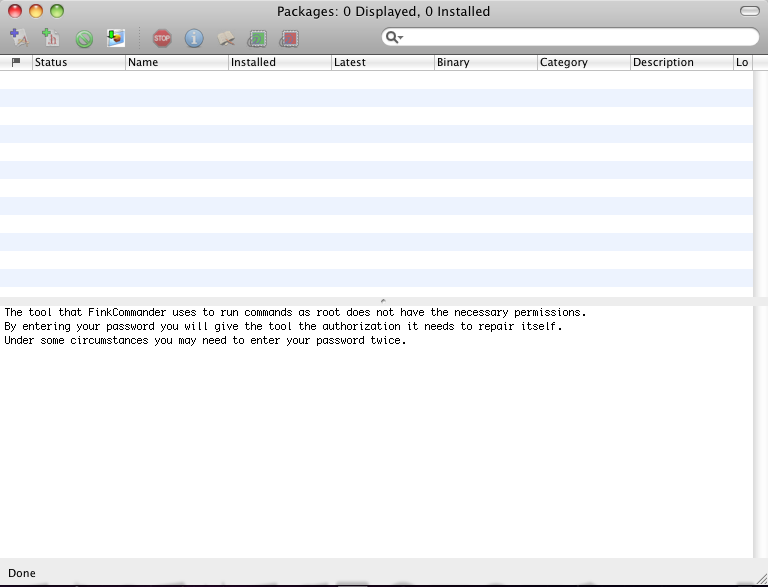The Fink project wants to bring the full world of Unix Open Source software to Darwin and Mac OS X. We modify Unix software so that it compiles and runs on Mac OS X ('port' it) and make it. FinkCommander is a graphical user interface for the Fink software packaging system for Mac OS X. It provides an intuitive front-end to the Fink command-line tools for downloading and installing Unix software. The source code is available. Upgrading Fink for Mac OS X 10.2. Apple introduced major changes in Mac OS X 10.2, and Fink installations need to be upgraded with care in order to cope with these changes. If you have upgraded to Mac OS X 10.2 on a machine with a pre-existing Fink installation, then this document will provide step-by-step instructions for upgrading Fink.

Homebrew Macport
| Stable release | binary distribution 0.9.0 / June 26, 2008; 12 years ago |
|---|---|
| Preview release | source distribution 0.44.1 / March 14, 2019; 19 months ago |
| Repository | |
| Written in | Perl |
| Operating system | macOS |
| Type | Package Management |
| License | GNU General Public License |
| Website | www.finkproject.org |
The Fink project is an effort to port and package open-sourceUnix programs to macOS. Fink uses dpkg and APT (Debian's package management system), as well as its own frontend program, fink (which is implemented as a set of Perl modules).
Implementation[edit]
Fink features a binary distribution for quick and easy installation using APT, as well as a more extensive source distribution.[1] In addition to command-line tools for handling packages, the shareware app Phynchronicity provides a GUI.
The Fink
Fink can be used to install newer versions of packages installed by macOS or to install packages not included in macOS by Apple edict. Fink stores all its data in the directory /sw by default (though this can be changed if initially compiling fink itself from source code). This goes against the Filesystem Hierarchy Standard's recommendation to use the /usr/localprefix; the reasons given in the Fink FAQ are that other installers might overwrite Fink's files under /usr/local, and that having an entirely separate directory makes it easier to disable the binaries and libraries that Fink installs.[2] Within Fink's directory, a FHS-like layout (/sw/bin, /sw/include, /sw/lib, etc.) is used.
History[edit]

The Fink project was started in December 2000 by German hacker Christoph Pfisterer.The name Fink is German for finch and is a reference to the name of the macOS core, Darwin; Charles Darwin's study of diversity among finches led him eventually to the concept of natural selection.

Christoph Pfisterer left the project in November 2001.[3] Since then, several people have stepped in and picked up support for Fink. As of March 2008, the project was managed by 6 administrators, 89 developers, and an active community. As of March 2014, the Fink core team were made up of nine active developers, who are responsible for the central management of the project and maintain the 'essential' packages.[4][5]
Mac Os X User Interface
The Fink community regularly adds support for the latest versions of macOS with their release. Latest Fink versions, starting with version 0.39, support OS X El Capitan.
See also[edit]
References[edit]
- ^See for example http://www.finkproject.org/faq/usage-fink.php question 5.7. The source distribution's package database is at http://pdb.finkproject.org/pdb/ and by examining the details of an individual package it is possible to see which versions of macOS are supported, and whether a binary version is available.
- ^'Fink – F.A.Q – General'. Retrieved 2009-01-23.
- ^Pfisterer, Christian. 'Christoph Pfisterer resigns from the fink project'. Archived from the original on 2008-09-23. Retrieved 2008-03-21.
- ^'Fink Contributors'. Retrieved 2013-03-07.
- ^'Organization of Fink'. Retrieved 2013-03-07.